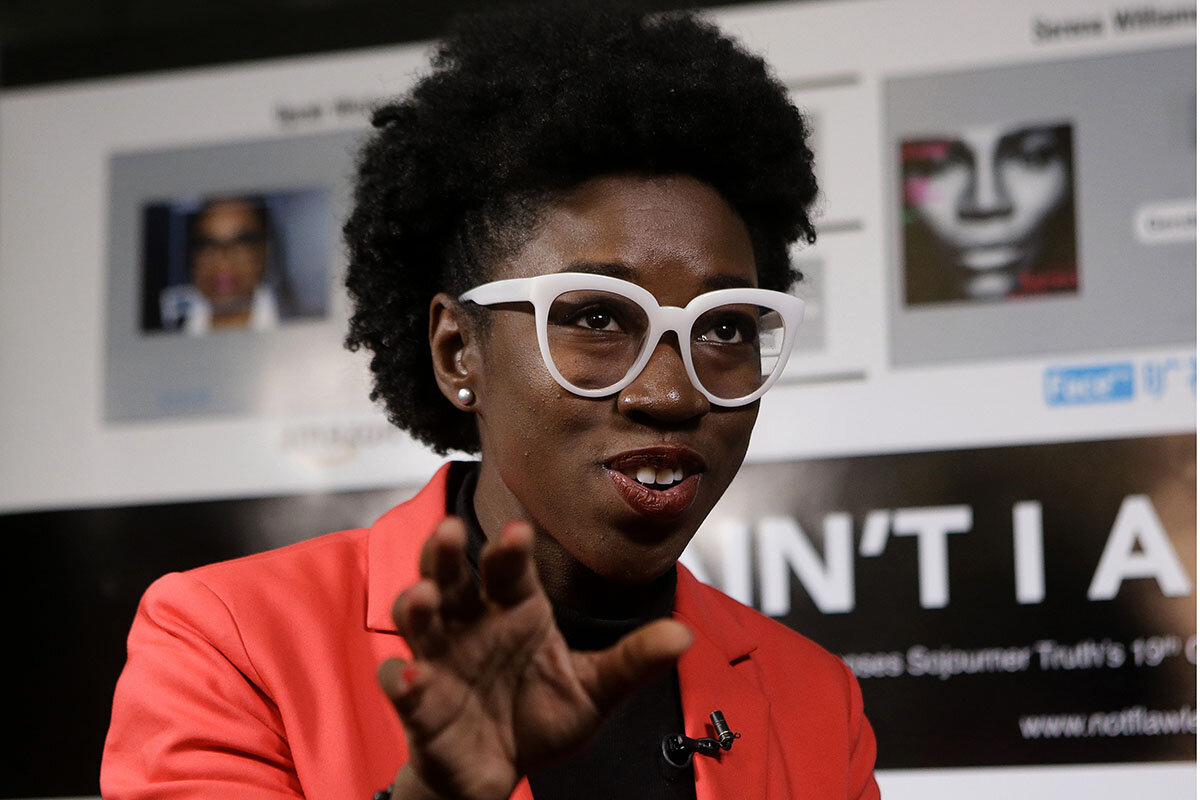Why filing taxes might soon require facial recognition
Loading...
| Washington
The Internal Revenue Service dropped a requirement for taxpayers to use facial recognition identification verification when it met bipartisan opposition in Congress earlier this year. And on April 14, a congressional committee opened an investigation into a facial recognition identity verification company over concerns about privacy, security, and the technology’s potential to discriminate.
Federal agencies have expanded, or have had plans to expand, use of the technology by 2023.
What problem is facial recognition trying to solve?
Why We Wrote This
The IRS was pressured to drop its plan to use facial recognition for tax identification this year. Experts say the technology is the future of security. But first, society must reconcile the promise and peril – protection vs. privacy – of it.
The IRS, which will still offer biometric recognition as a taxpayer option, hopes to reduce fraud.
“A significant challenge over time for the IRS has been the problem of stolen identities and then refund fraud,” says John Koskinen, former IRS commissioner. When he began as head of the IRS in 2013, he says, over $5 billion a year went to criminals.
Last year, the IRS contracted with the private digital identity verification company ID.me to use facial recognition screening for taxpayers who wished to access their historical tax documents online. The company also is used by the federal government for unemployment assistance. Comparing a user-uploaded “video selfie” to government records like a driver’s license, the company’s software is intended to automate identity verification and ferret out fraud.
ID.me is used by at least 27 states and multiple federal agencies, but concerns over privacy and data security caused the IRS to drop the service in February. No federal law regulating how facial recognition data can be used or shared.
How does it work?
Facial recognition uses algorithms to make comparisons and find matches. Those algorithms can be classified into two types: one-to-many and one-to-one. One-to-many matching compares a photo against a gallery of stored photos while one-to-one matching evaluates an image against another to verify a person’s identity.
A handful of agencies use facial recognition to control building access. Other agencies like the Department of Homeland Security use the technology for domestic law enforcement, including for leads in criminal investigations, and border security.
A mistake in one-to-one may allow access to impostors while a wrong one-to-many match could lead to false accusation.
Is the tech equitable?
Depending on the data the algorithm focuses on, the software can be less accurate for women and those with darker skin, says Ashley Johnson, senior policy analyst at the Information Technology and Innovation Foundation.
While an error in certain applications of facial recognition like accessing one’s records could be a hassle, mistakes in other applications such as law enforcement could have deleterious effects.
Artificial intelligence researchers argued that, because of gender and skin-tone bias, Amazon’s facial recognition software shouldn’t be sold to law enforcement. The company placed a moratorium on police use of the technology in 2020. Cities, including Boston and San Francisco, have banned facial recognition.
Meanwhile, China reportedly uses the technology, reportedly to track its Uyghur population.
“If [the United States] just bans facial recognition technology outright, instead of creating rules for how it should be used, then the U.S. is ending up in a world where China is setting the example of how to use facial recognition technology, and setting a very bad example,” Ms. Johnson says.
But the country of origin of facial recognition software is no guarantor of fairness or freedom. The New York-based company Clearview AI, used by 10 federal agencies, has an “index of faces” with billions of photos collected across the internet and social media sites. Such wide-scale collection represents an attack on Fourth Amendment privacy considerations, says Nathan Sheard, deputy managing director at the Electronic Frontier Foundation.
Adoption of facial recognition across government is not a foregone conclusion, says Mr. Sheard, who points to legislative opposition to facial recognition, especially to its law enforcement uses.
What are potential benefits?
Former IRS Commissioner Koskinen sees the technology as a tool that can potentially protect government resources and personal information.
“Ten years from now, we’ll look back on this problem and say, ‘Well, that was the beginning when people were nervous,’” says Mr. Koskinen, now a board member at the National Academy of Public Administration. “The purpose of all this is to protect [people] and protect their data.”







